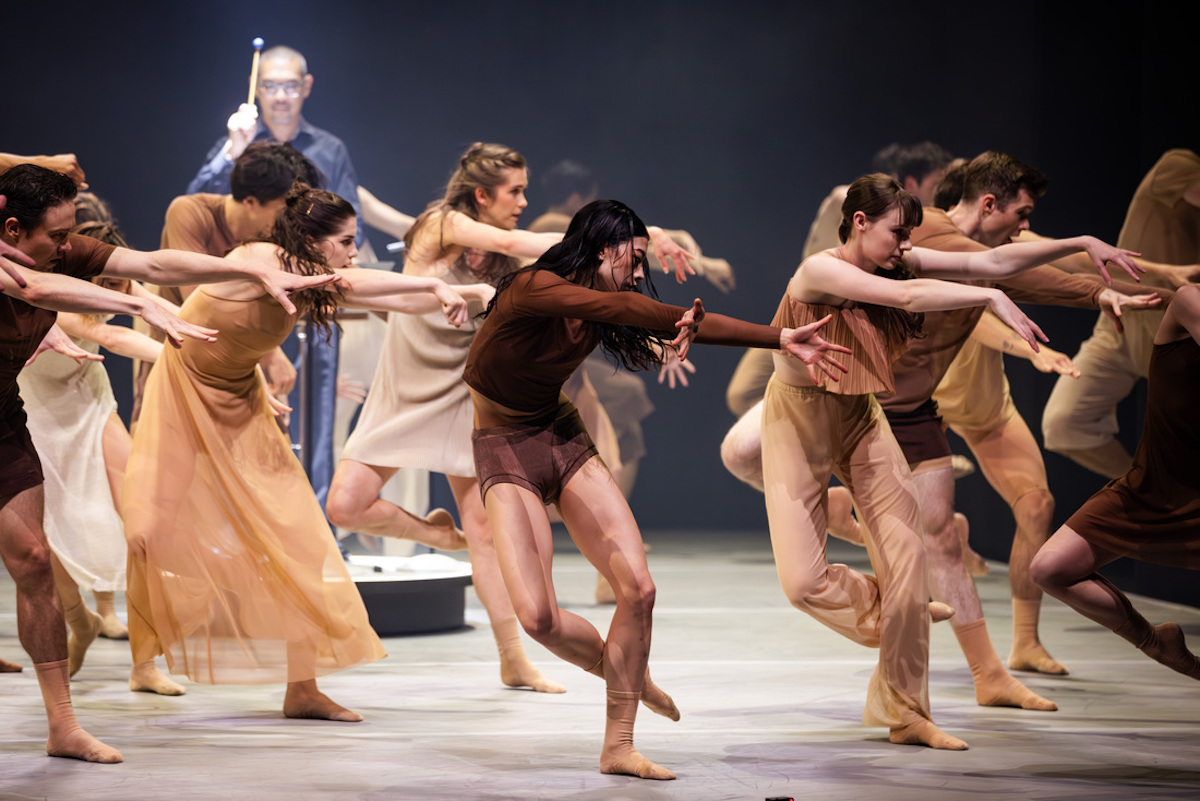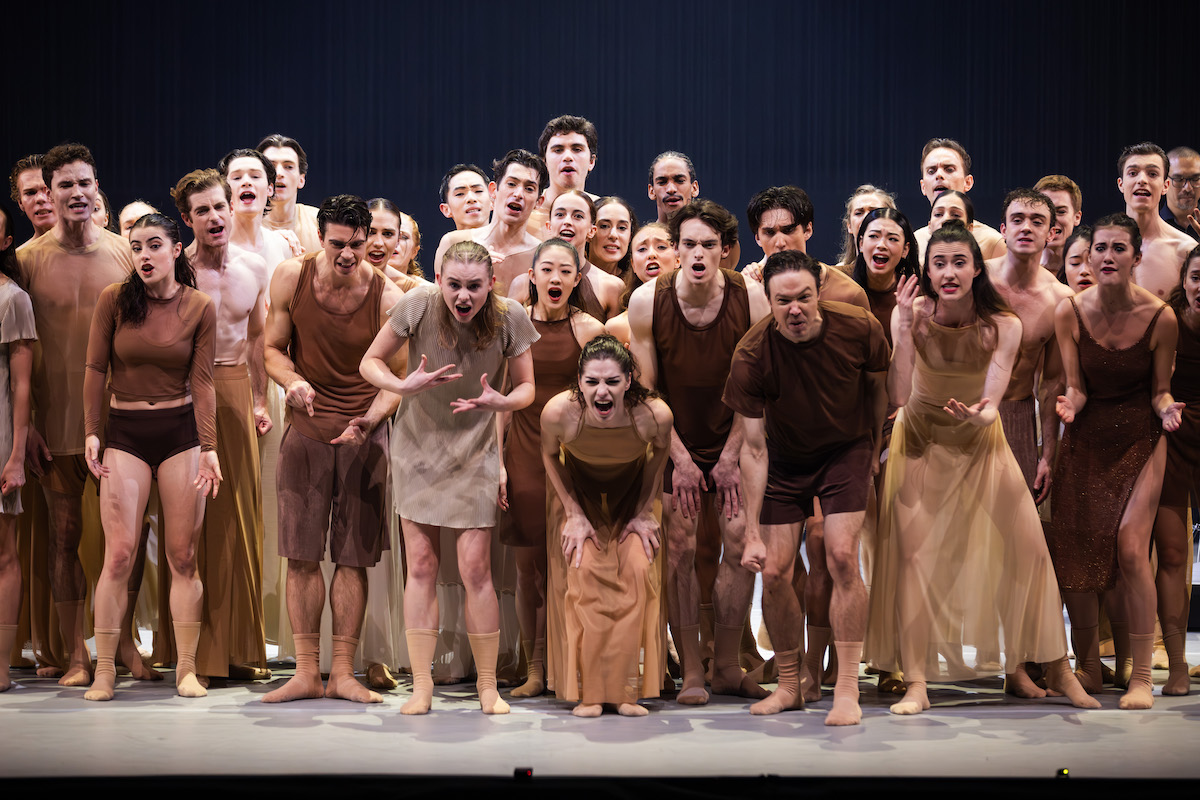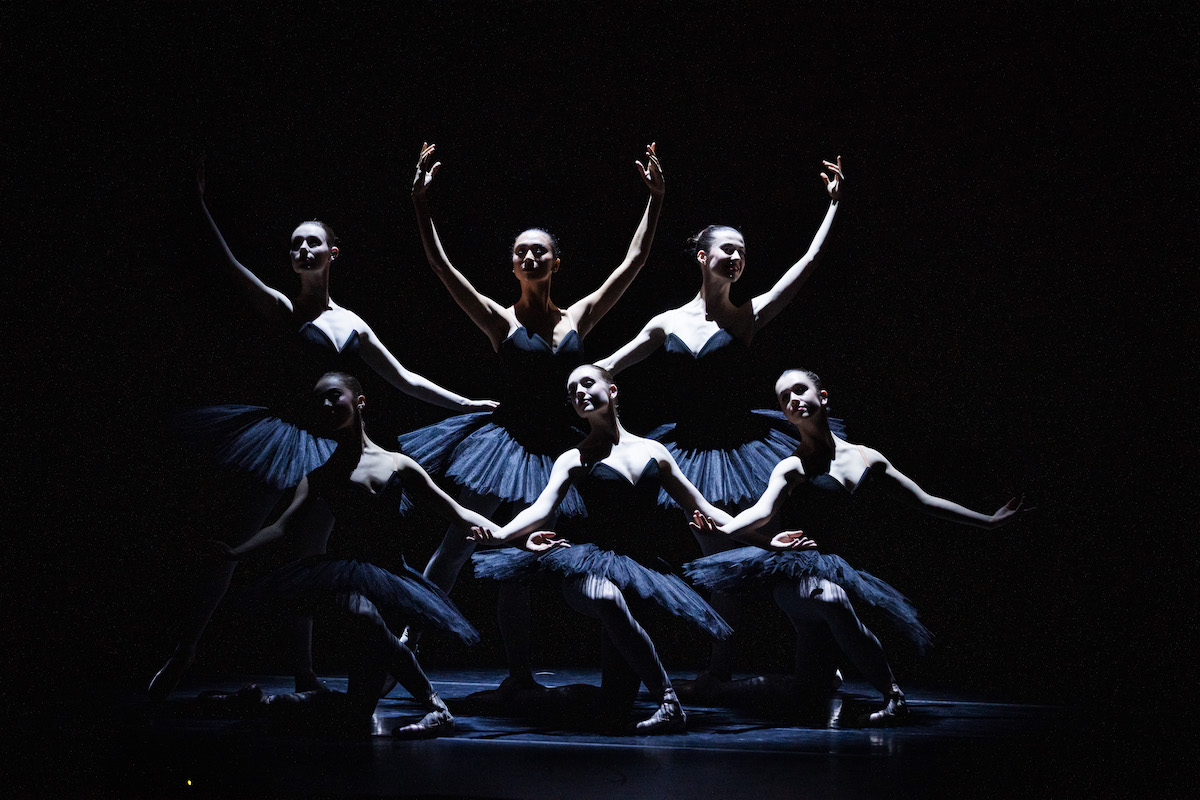It comes down to this: Études is about how ballet is built and what it looks like; Circle Electric is about what meaning there is in dance and how it makes you feel.
They are two radically different works, one made in 1948 and the other more or less yesterday, put together by The Australian Ballet’s artistic director David Hallberg to illustrate the broad church that is 21st century ballet.

The Australian Ballet’s Circle Electric. Photo © Daniel Boud
As it happens, oppositions are central to the work of Stephanie Lake, TAB’s new resident choreographer, and are woven into the fabric of Circle Electric. As in all her work she focuses on ideas of the individual and the crowd, order versus chaos, acceptance and exclusion, control and co-operation. In other words, her dance is about life.
Circle Electric had its origin last year as a 15-minute chamber work for TAB’s touring program, made for six dancers. The original impulse and lovely fragments of its choreography remain in a piece grown to use the power of 49 dancers (if my counting is correct). Also expanded are the original bracing contributions of Robin Fox (electronic music now intertwined with a score for live orchestra), Paula Levis (costumes), Charles Davis (set) and Bosco Shaw (lighting).
Circle Electric now runs for about 60 minutes and that hour contains a multitude of exhilarating, stimulating, fascinating moments. And it also at times meanders, has false endings and repeats that feel unnecessary.
It’s fair to say, I think, that sometimes a person can be given too many resources. The bounty in front of her seems to have made Lake want to put in everything. Circle Electric intersperses thrilling group dances with too many duos and the show seems to end at least twice before it does. It feels baggy compared with Lake’s earlier mega-hits Colossus and Manifesto and that bagginess dilutes Lake’s intentions.
That said, when you look at the star rating – always difficult when there’s more than one work on the bill – almost all the stars are for Circle Electric. It is the work of one of our most original, searching, risk-taking minds in dance.

The Australian Ballet’s Circle Electric. Photo © Daniel Boud
Circle Electric doesn’t have a narrative but Lake is nevertheless a story-teller. She is devoted to the complexity of being human: the push and pull of the individual versus the group, the one against the other, the times when everyone gets along and the times when they don’t.
Lake’s gift is to create movement – intense, twitchy, hyper-energetic – that tells you instantly whether two people are friends, lovers, antagonists or passing acquaintances. She is also great with large groups. There is one that evokes a flock of birds responding to its leader and is more than that, another in which the dancers swing their arms and stamp like unstoppable marauders, yet another in which the company chats amongst itself (a Lake speciality) then divides and conquers to the accompaniment of on-stage drummers. Why the drummers are there at that point isn’t immediately obvious but they bring joy, so that’s reason enough.
Also bringing joy is the anonymous and seemingly endless stream of dancers crossing the stage via a high platform in contrast to a scene of bucolic ease below. It has an antecedent, at least to these eyes, in Jerome Robbins’s Glass Pieces but is none the less mesmerising for that.
Everyone is equal, and equally wonderful, in the shifting, golden circle but a few should be named. Principal artist Benedicte Bemet was glorious in her stillness in front of the pack; coryphée Adam Elmes was unforgettable in a brief but searing solo; and it was good to be able to pick out the original six in Circle Electric 2023 (Sara Andrlon, Hugo Dumapit, Lilla Harvey, Cameron Holmes, Samara Merrick and Maxim Zenin).
Such was the yin and yang of the evening that on opening night some sat firmly on their hands at the end of Circle Electric but robust cheers and a sizeable standing ovation from many more clearly voted them down.
Hats off to the many dancers who had to get heads and bodies into an entirely different space over the course of interval and will have to do so over the season. There are about 90 bodies required across both programs which means a lot of crossover. And so to Études, which comes second on the bill.

The Australian Ballet’s Études. Photo © Daniel Boud
Études, choreographed by Harald Landers in 1948, is an ode to ballet technique and to the virtuosity possible when the lessons have been thoroughly absorbed. Technique and lessons. Yes, it’s as dull as it sounds, even when Études revs up near the end to offer a flood of high-speed turns and leaps in various permutations.
The success of Études is essentially measured by how correct it is, which is a chilly place to be. Tiny flaws loom large in such a context. Ako Kondo’s supreme finesse and spark in the central ballerina role saved the day. She rose above the material.
Lake wasn’t the only new face to be introduced. Jessica Gethin, conducting the Opera Australia Orchestra, was recently appointed artistic adviser to Orchestra Victoria, a wholly owned subsidiary of TAB. She is also principal conductor at West Australian Ballet so no newcomer to dance as her direction of the night’s music showed.
The complexities of Robin Fox’s Circle Electric score were negotiated with steely control and Gethin kept up the pace or showed a bit of compassion when needed for Études, which is danced to Carl Czerny’s studies for piano as orchestrated by Knudäge Riisager.
The Australian Ballet’s Études/Circle Electric is at the Joan Sutherland Theatre, Sydney, until May 18 and the Regent Theatre, Melbourne, from October 2-9.











Comments
Log in to join the conversation.